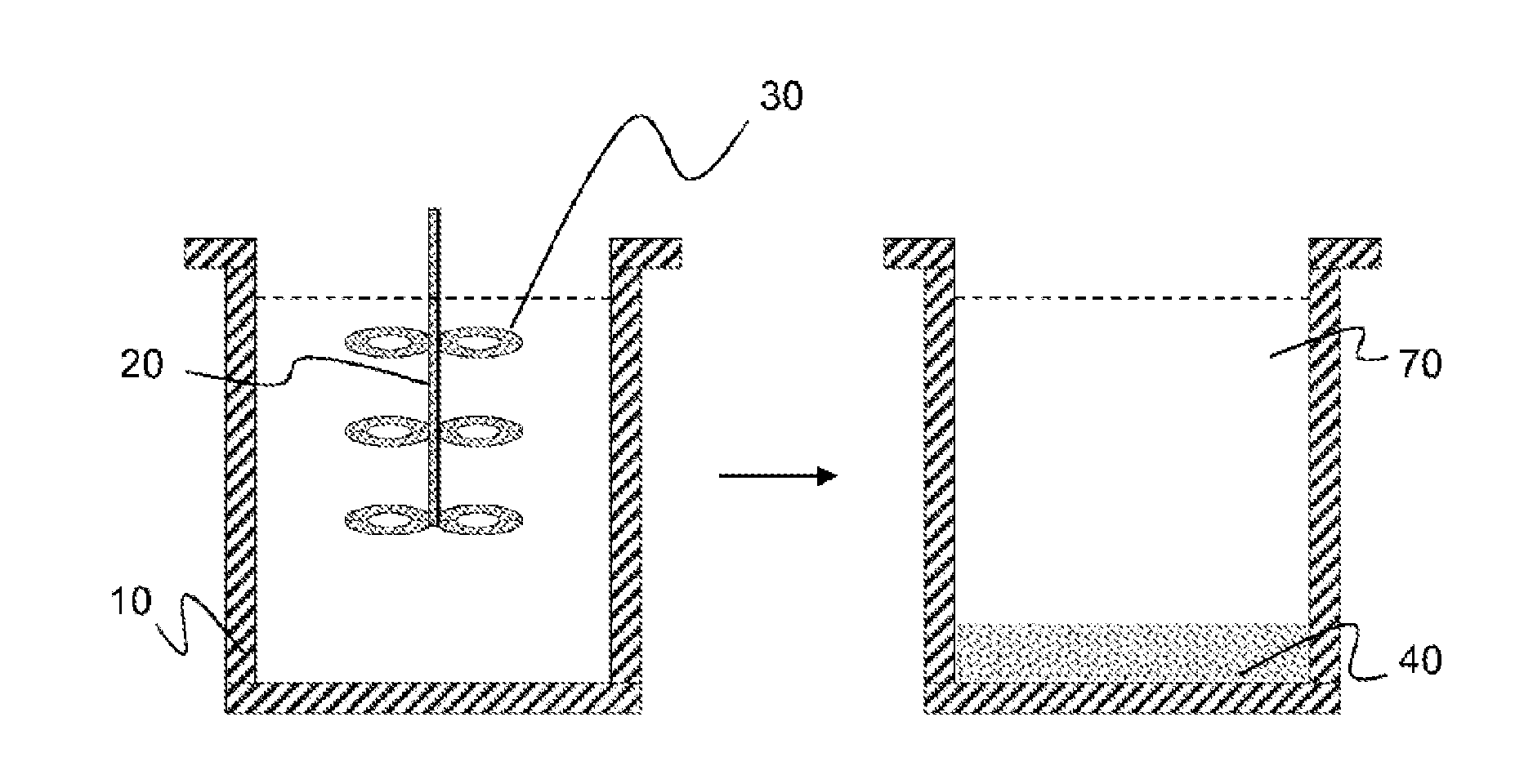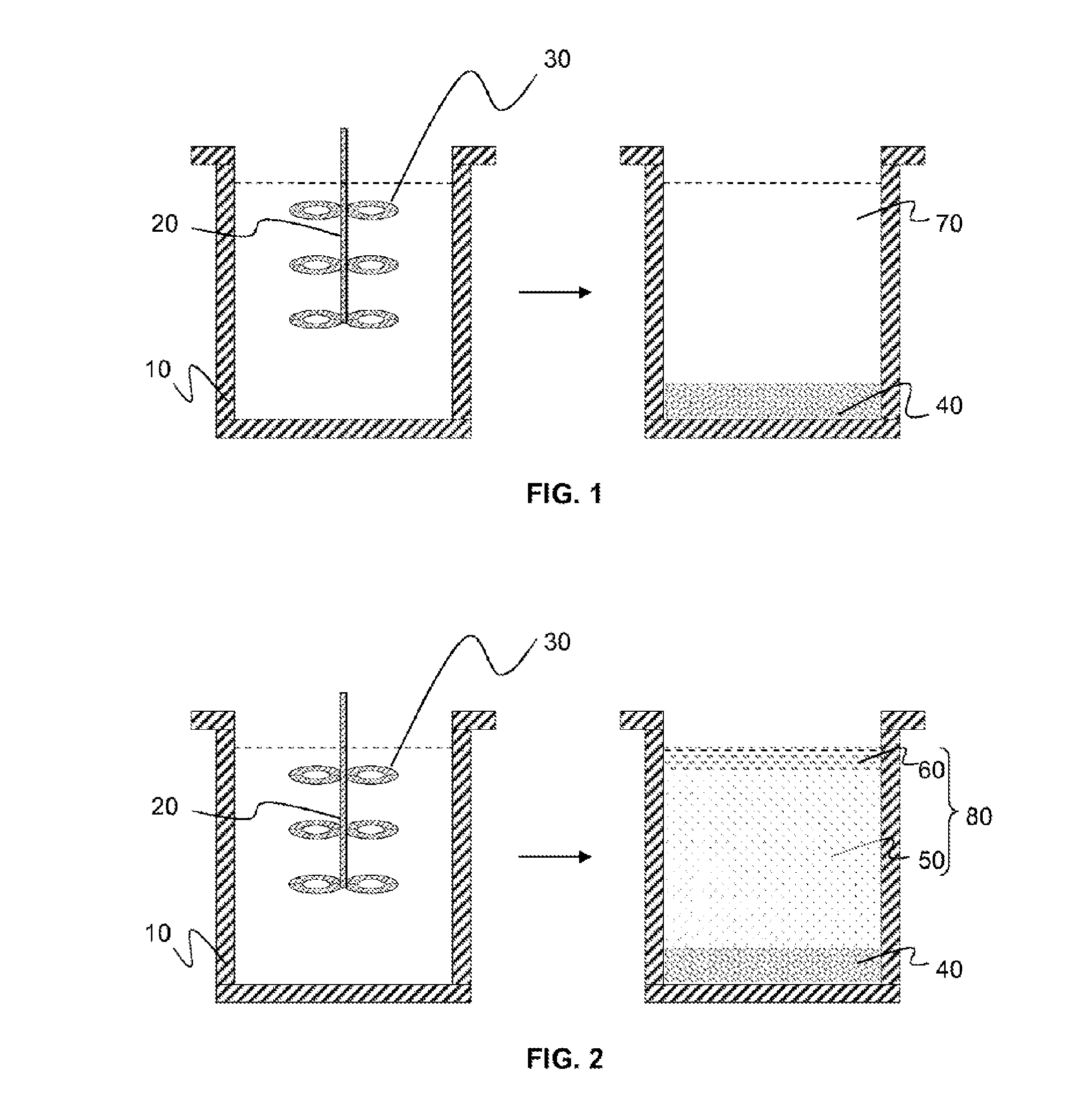Method for treating oil sands and device for implementing such a method
- Summary
- Abstract
- Description
- Claims
- Application Information
AI Technical Summary
Benefits of technology
Problems solved by technology
Method used
Image
Examples
example 1
The Case of Cryogenic Grinding and Sieving Cooled Conventionally and without Addition of Separating Fluid
[0142]This example makes it possible to verify that cryogenic grinding and sieving without addition of separating fluid only leads to a method of treatment with limited performance.
[0143]The work was carried out with an oil sand that contained 0.4% of water and, after drying, contained 11 wt % of bitumen and 89% of mineral material. Various samples of this oil sand were submitted to an operation of cryogenic grinding and sieving. For this purpose, the work was carried out in an air-conditioned room at −25° C. and all the instruments used during the experiments that were carried out: grinding mill, sieve, tweezers, spatulas, etc., were cooled beforehand with liquid nitrogen.
[0144]The grinding mill used was of the rotary impact type made by the company Fritsch, of the “Pulverisette 14.702” type. The rotary speed of the grinding mill was maintained at 15 000 revolutions per minute.
[...
example 2
The Case of Cryogenic Grinding and Sieving Cooled with Solid or Liquid CO2 but without the Presence of a Separating Fluid
[0150]In this case, the nature of the oil sand submitted to the experiment is the same as previously, i.e. containing, after drying, 11% of bitumen and 89% of inorganic material. The grinding mill is also of the Fritsch rotary type, “Pulverisette 14702”.
[0151]But this time, instead of permanently cooling the laboratory to −25° C. and the equipment temporarily with liquid nitrogen, the grinding mill was put in an atmosphere cooled by supplying an initial weight of solid CO2 and purging with gaseous CO2, also cooled. The temperature of the grinding mill during operation could thus be maintained at about −30° C. As soon as grinding was finished, the resultant oil sand was recovered in an atmosphere consisting of gaseous CO2 resulting from the change of state of the solid CO2 initially introduced to cold gaseous CO2 and liquid CO2, which itself transformed into gaseou...
example 3
Extraction According to the Invention
[0155]Learning from the unsatisfactory results of examples 1 and 2, we tried to reproduce experimentally the method according to the invention on laboratory equipment used conventionally for visualization of thermodynamic equilibria at high pressure, consisting of a transparent cell of about 50 cm3 (sapphire tube with height of 100 mm and inside diameter of 25 mm) placed in an enclosure that could maintain the temperature of the cell at a fixed value by controlled injection and expansion of carbon dioxide. A stirring rotor with a vertical axis is arranged at the bottom of the cell. An external system makes it possible to circulate the fluid (CO2) through the cell and adjust the pressure to a fixed value.
[0156]Three types of oil sands (OS) were employed. The composition of these oil sands is shown in Table 3 below (in wt %):
TABLE 3Sample% Bitumen% Water% Mineral matterOS A12.45.582.1OS B9.15.885.1OS C5.911.382.8
[0157]The test sample (15 g) and pel...
PUM
 Login to View More
Login to View More Abstract
Description
Claims
Application Information
 Login to View More
Login to View More - R&D
- Intellectual Property
- Life Sciences
- Materials
- Tech Scout
- Unparalleled Data Quality
- Higher Quality Content
- 60% Fewer Hallucinations
Browse by: Latest US Patents, China's latest patents, Technical Efficacy Thesaurus, Application Domain, Technology Topic, Popular Technical Reports.
© 2025 PatSnap. All rights reserved.Legal|Privacy policy|Modern Slavery Act Transparency Statement|Sitemap|About US| Contact US: help@patsnap.com



